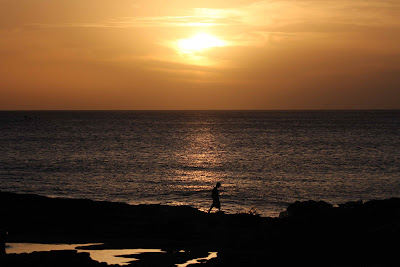The Nicaraguan Gross Domestic Product in 2005 was $4.9 billion dollars, or about $860 dollars per person.
This modest amount implies that wages must be very low and this is the case.
According to WHO data, the average monthly minimum wage (Nicaraguan Cordobas converted to Canadian Dollars) in 2006 was $45 for an agricultural worker and $101 for a fisherman. This information supports other data that I have read that a substantial percent of the population earns less than $500 a year. The WHO also reports that the average cost to meet the basic nutritional needs of a person is $133 a month. Therefore those individuals who are paid the minimum wage are starving.
The child labor market includes an estimated 240,000 children and adolescents of whom 61.4% do not receive any remuneration at all.
Many Nicaraguan men work in Costa Rica, where the wages are much higher. The economy in Costa Rica has blossomed in the last few decades courtesy of tourism and foreign investment. The Nicaraguan government has actively encouraged tourism and foreign investment since 2006. Americans, Canadians, Australians, and Europeans are traveling to Nicaragua in record numbers. American Airlines recently started a non-stop flight to Managua from Miami.
The clinic where I help out is located in Limon, a community on the north-south Pacific coastal road. The clinic is only about five km inland from the coast. The region has a lot of tourist potential. San Juan del Sur, a coastal community further to the south has boomed over the last decade and now has cruise ships that stop every week.
The low cost of land and labor are attractive for foreign investors. I have talked to numerous Americans who have built or who are building in Nicaragua. The current wage for an unskilled worker at a building site is $150 a month. Doesn't sound like much, but this is at least more than the cost of the basic nutritional needs for an individual. However, what if this person is the sole wage earner for a family of 4. That means the family is still starving.
Tourism and foreign investment imports much needed dollars into Nicaragua and increases employment at higher than the minimum wage. Is this good? The money and employment is good, but there is always a cost. The Nicaraguan people are selling their prime real estate to improve their standard of living.
This modest amount implies that wages must be very low and this is the case.
According to WHO data, the average monthly minimum wage (Nicaraguan Cordobas converted to Canadian Dollars) in 2006 was $45 for an agricultural worker and $101 for a fisherman. This information supports other data that I have read that a substantial percent of the population earns less than $500 a year. The WHO also reports that the average cost to meet the basic nutritional needs of a person is $133 a month. Therefore those individuals who are paid the minimum wage are starving.
The child labor market includes an estimated 240,000 children and adolescents of whom 61.4% do not receive any remuneration at all.
Many Nicaraguan men work in Costa Rica, where the wages are much higher. The economy in Costa Rica has blossomed in the last few decades courtesy of tourism and foreign investment. The Nicaraguan government has actively encouraged tourism and foreign investment since 2006. Americans, Canadians, Australians, and Europeans are traveling to Nicaragua in record numbers. American Airlines recently started a non-stop flight to Managua from Miami.
The clinic where I help out is located in Limon, a community on the north-south Pacific coastal road. The clinic is only about five km inland from the coast. The region has a lot of tourist potential. San Juan del Sur, a coastal community further to the south has boomed over the last decade and now has cruise ships that stop every week.
The low cost of land and labor are attractive for foreign investors. I have talked to numerous Americans who have built or who are building in Nicaragua. The current wage for an unskilled worker at a building site is $150 a month. Doesn't sound like much, but this is at least more than the cost of the basic nutritional needs for an individual. However, what if this person is the sole wage earner for a family of 4. That means the family is still starving.
Tourism and foreign investment imports much needed dollars into Nicaragua and increases employment at higher than the minimum wage. Is this good? The money and employment is good, but there is always a cost. The Nicaraguan people are selling their prime real estate to improve their standard of living.
 |
| Blue Crab, Callinectes sapidus, watched me carefully for a moment, |
 |
| then disappeared into the sand within a few seconds. |











